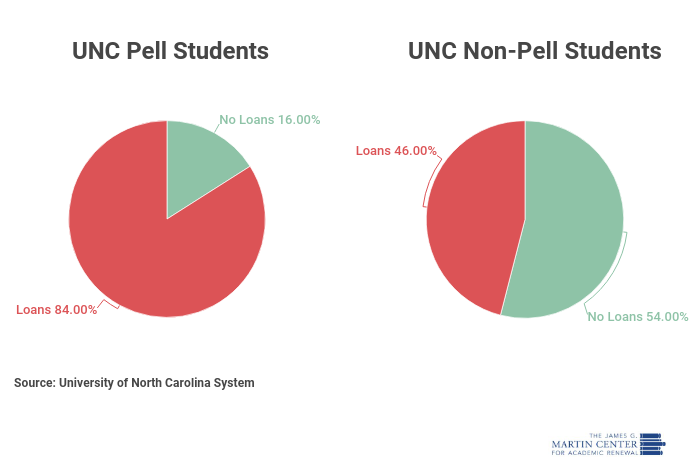The federal Pell Grant program provides need-based grants to millions of college students every year—and costs the government over $30 billion annually.
But even with that large investment, Pell Grant students in North Carolina borrow more student loans and drop out of college at higher rates than their peers. According to data from the University of North Carolina system, Pell Grant students are more likely than non-Pell students to take out loans. In the UNC system, 84 percent of Pell students receive loans, while only 46 percent of non-Pell students take out loans.
Of students who do take out loans, UNC Pell Grant students also tend to have higher levels of debt. On average, Pell students borrow $3,000 more in loans than non-Pell borrowers.
That average holds true when comparing groups of students who did not graduate and those who did graduate.
For students who started college in 2012 or 2013 and did not graduate, Pell students accumulated $9,917 in debt after six years, while non-Pell students accumulated $6,500. For students who did graduate, Pell students had $24,740 in student debt after six years, while non-Pell students had $21,500.
Pell Grant students are also less likely to graduate than non-Pell students. From the same UNC data, 67 percent of non-Pell students graduated, while 62 percent of Pell students graduated.
Shannon Watkins is senior writer at the James G. Martin Center for Academic Renewal.

